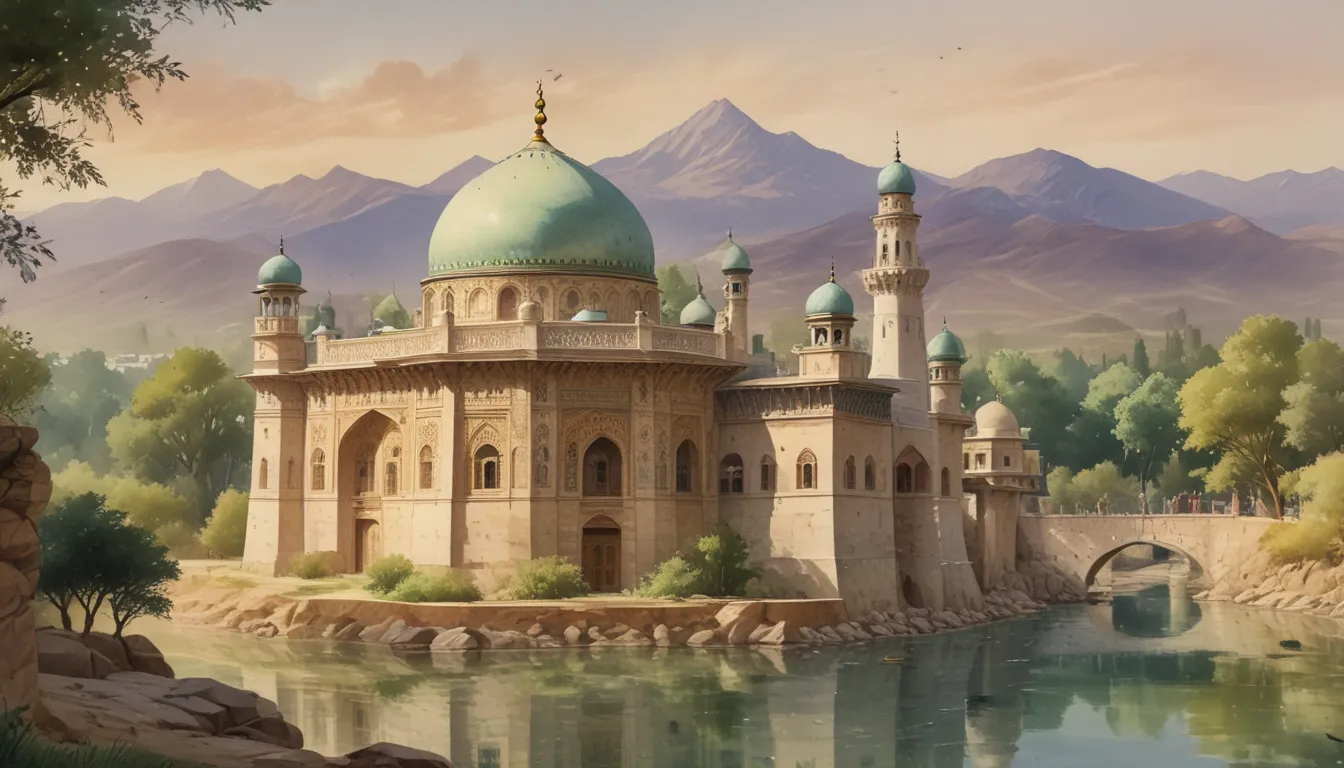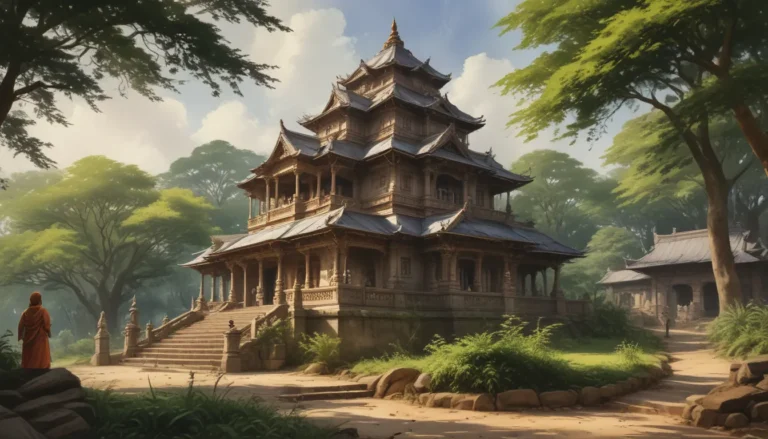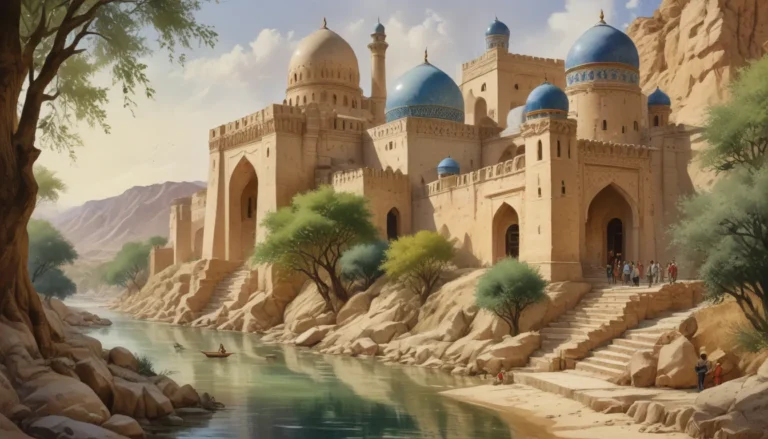The images in our articles are for illustrative purposes only and may not exactly match the content. They are intended to capture your interest and complement the text, not to replace it.
Shah-i-Zinda, a mesmerizing architectural complex nestled in the heart of Samarkand, Uzbekistan, is a beacon of historical and cultural significance. With its intricate mausoleums, vibrant tilework, and rich history, Shah-i-Zinda stands as a testament to human creativity and Central Asian heritage. Join us on a journey through this awe-inspiring landmark as we uncover the fascinating facts that make it a hidden gem waiting to be explored.
Discovering the Name Behind the Legend
The name “Shah-i-Zinda,” which translates to “The Living King” in Persian, carries a profound significance within the complex. It is believed to honor Qusam ibn Abbas, a revered cousin of Prophet Muhammad, known as a “living saint” in Islamic tradition. The name itself resonates with the spiritual aura that envelops Shah-i-Zinda, inviting visitors to delve into the realm of faith and reverence.
A Glimpse into the Past: The Majestic Necropolis
Shah-i-Zinda stands as an ancient necropolis, showcasing a splendid collection of mausoleums that date back to the 11th and 15th centuries. These architectural marvels reflect the grandeur of the Timurid dynasty, with each structure telling a story of royalty, power, and artistic excellence. As you wander through the complex, you can witness the tombs of princes, princesses, and high-ranking officials, adorned with intricate designs that speak to their significance in history.
Marveling at Architectural Grandeur
The mausoleums of Shah-i-Zinda are not merely monuments but architectural masterpieces that transcend time and space. The intricate mosaic work, vibrant azure tiles, and delicate calligraphy that adorn these structures are a testament to the artistic brilliance of the Timurid era. The fusion of Persian, Arabic, and Central Asian influences creates a symphony of design that leaves visitors in awe of the craftsmanship and vision of the artisans who built these sacred tombs.
Embarking on a Spiritual Journey
Shah-i-Zinda is more than just a historical site – it is a sacred place of pilgrimage for Muslims worldwide. Pilgrims flock to this hallowed ground, believing that prayers offered at the tombs bring blessings and spiritual fulfillment. The atmosphere is imbued with a sense of reverence and tranquility, offering visitors a chance to connect with their faith and embrace the spiritual energy that permeates the complex.
Unraveling Mysteries: The Eternal Flame and Legendary Figures
Within the confines of Shah-i-Zinda, an eternal flame known as the “eternal torch” has been burning for centuries, symbolizing the enduring presence of the spiritual realm. Among the revered shrines is one dedicated to Qusam ibn Abbas, the legendary cousin of Prophet Muhammad, whose tomb is believed to hold the power to grant prayers and wishes. The blend of mysticism and history creates an enchanting aura that draws visitors into a realm of wonder and intrigue.
Preserving the Past: UNESCO World Heritage Recognition
In 2001, Shah-i-Zinda was bestowed with the prestigious title of a UNESCO World Heritage Site, underscoring its outstanding universal value as an architectural ensemble and its pivotal role in human history. This recognition has not only elevated the profile of Shah-i-Zinda on the world stage but also underscored the importance of preserving its rich heritage for future generations to cherish.
Crafting a Legacy: Artists’ Inspiration and Timurid Opulence
The beauty of Shah-i-Zinda has long captivated artists, writers, and poets, who have found inspiration in its ethereal charm and colorful ambiance. The complex stands as a symbol of the Timurid Empire’s grandeur and opulence, showcasing the artistic achievements of a bygone era. The intricate designs and decorative elements serve as a canvas of creativity, inviting observers to marvel at the fusion of artistic styles that define the complex.
Embracing the Enigma of Blue Tiles
One of the most striking features of Shah-i-Zinda is the extensive use of blue-glazed tiles, which adorn the structures with an air of mystique and beauty. The choice of this color remains a subject of debate and mystery, adding to the allure of the complex. Each tile tells a story of craftsmanship and artistry, inviting visitors to ponder the symbolic significance behind this enigmatic choice of hue.
Nurturing Heritage: Restoration and Preservation Efforts
Over the years, dedicated efforts have been made to preserve and restore Shah-i-Zinda, ensuring that its beauty and historical significance are safeguarded for posterity. These initiatives aim to protect the complex from the ravages of time and environmental factors, enabling future generations to appreciate the architectural splendor and cultural richness of this revered site.
Embracing History: A Tapestry of Empires and Transformations
Shah-i-Zinda stands as a witness to the ebb and flow of empires, the winds of change, and the cultural transformations that have shaped its long history. Exploring its tombs and structures allows us to unravel the intricate tapestry of the past, offering a glimpse into the vibrant and diverse history of Central Asia. Each step taken within the complex is a journey through time, filled with stories of conquest, resilience, and human ingenuity.
Celebrating Human Creativity
At the heart of Shah-i-Zinda lies a testament to human creativity, skill, and craftsmanship. The artisans who crafted these intricate mausoleums left behind a legacy of artistic expression that transcends generations. Every detail, every motif, and every inscription reflects their dedication and vision, creating a symphony of beauty that resonates with visitors from around the world.
Bridging Cultures: A Window into Central Asian History
Shah-i-Zinda serves as a cultural bridge between civilizations, showcasing the convergence of Persian, Arabic, and Central Asian influences in its architectural design. The complex stands as a beacon of diversity and exchange, inviting visitors to explore the crossroads of trade, art, and religious traditions that have shaped the region’s history. It offers a window into the rich tapestry of Central Asian heritage, inviting us to celebrate the multifaceted legacy of the past.
Embracing Endurance: An Ever-Evolving Destination
Despite the passage of time, Shah-i-Zinda remains a timeless destination that continues to captivate visitors with its allure and historical significance. Whether you seek spiritual solace, artistic inspiration, or a glimpse into the past, Shah-i-Zinda offers a transformative experience that lingers long after your visit. Its timeless appeal beckons travelers and researchers alike to uncover its secrets and embrace its enduring beauty, making it a destination of discovery and wonder.
Conclusion: A Jewel of Uzbekistan’s Heritage
In conclusion, Shah-i-Zinda stands as a breathtaking landmark that embodies the rich historical and cultural heritage of Uzbekistan. Its intricate architecture, vibrant tiles, and sacred tombs weave a tapestry of beauty and spirituality that transcends time. As you wander through its hallowed grounds, you will be transported to a bygone era, where the echoes of history whisper tales of glory and resilience.
Plan your visit to Shah-i-Zinda and embark on a journey through the annals of Central Asian history, where legends come to life and mysteries unfold. Whether you are a history enthusiast, an architecture aficionado, or a seeker of spiritual enlightenment, Shah-i-Zinda promises an experience that will remain etched in your memory for years to come. Be prepared to be dazzled by its beauty, inspired by its history, and uplifted by its spiritual essence – Shah-i-Zinda is a gem among the world’s landmarks, waiting to be explored.
FAQs: Unveiling the Mysteries of Shah-i-Zinda
-
What is Shah-i-Zinda?
Shah-i-Zinda is a necropolis complex located in Samarkand, Uzbekistan, renowned for its collection of mausoleums, including the shrine of Kusam ibn Abbas, a cousin of the Prophet Muhammad. -
How old is Shah-i-Zinda?
The earliest mausoleum in Shah-i-Zinda dates back to the 11th century, with subsequent additions spanning centuries, making it a monument with over a millennia of history. -
What is the significance of Shah-i-Zinda?
Shah-i-Zinda holds immense religious and cultural importance for Muslims, serving as a revered pilgrimage site where prayers are answered and spiritual fulfillment is sought. It also showcases the exquisite architectural style of the Timurid period. -
Can visitors enter the mausoleums?
Visitors are not allowed to enter the mausoleums themselves but can admire the intricate tilework and designs adorning the exteriors of these sacred structures, unraveling the beauty of their craftsmanship. -
Is photography allowed in Shah-i-Zinda?
Photography is generally permitted within the complex, but visitors are advised to respect the sanctity of the site and adhere to any regulations in place to preserve its religious integrity. -
How should I dress when visiting Shah-i-Zinda?
As a religious site, it is recommended to dress modestly when visiting Shah-i-Zinda, with attire covering shoulders and legs being considered appropriate as a mark of respect. -
Can I visit Shah-i-Zinda at any time of the year?
Shah-i-Zinda welcomes visitors throughout the year, offering an immersive experience regardless of the season, with cooler months proving ideal for exploring the complex. -
How long does it take to explore Shah-i-Zinda?
The duration of your visit to Shah-i-Zinda depends on your level of interest and curiosity, with a few hours typically sufficient to explore the main highlights or delve deeper into its mysteries at a leisurely pace. -
Are there any entry fees for Shah-i-Zinda?
Yes, there is an entry fee for visiting Shah-i-Zinda, with varying rates for domestic and foreign visitors. It is advisable to check the current fees before planning your visit to ensure a seamless experience. -
Are there any nearby attractions to visit along with Shah-i-Zinda?
Samarkand offers a wealth of historic sites to explore alongside Shah-i-Zinda, including Registan Square, Gur-e-Amir Mausoleum, and Bibi-Khanym Mosque, each adding depth to your journey through Uzbekistan’s cultural tapestry.
Experience the allure and grandeur of Shah-i-Zinda, a treasure trove of history and architecture that beckons to be discovered. Immerse yourself in the rich heritage of Uzbekistan and uncover the mysteries that lie within this remarkable complex. Plan your visit, embrace the beauty, and embark on a journey through time at Shah-i-Zinda – a jewel of Central Asian history waiting to enchant and inspire you.






